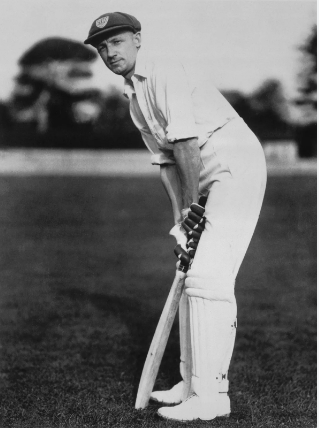In 1908, in the Cootamundra region of New South Wales in Australia a child was born arguably the greatest and most entertaining batter of all time, Donald George Bradman.
Nicknamed ‘The Don’, Bradman was one of those few batters in the sport during the 1920s to 1940s who instilled fear in the minds of bowlers and often left them confused as to what they should bowl to him. Bradman was famous for his highly entertaining and attacking brand of cricket, shades of which can be found in modern-day greats like Sanath Jayasuriya, Sachin Tendulkar, Virender Sehwag, AB De Villiers, Adam Gilchrist, Ricky Ponting, Virat Kohli, etc. Before the power-plays, field restrictions, thick and more batter-friendly bats and free hits, Bradman truly dominated the bowlers and made an otherwise even battle between the bat and ball appear extremely favourable to batters during his stay at the crease.
This iconic Aussie batter holds some towering cricket records that still stand to this very day. In 52 Tests, he scored 6,996 runs at an average of 99.94. This is the highest average held by a batter in any format of the game. He scored a whopping 29 hundred and 13 fifties. His best individual score is 334. With 29 tons in 80 innings, he has the best conversion rate of 36.25 per cent. Bradman has also hit a massive total of 12 Test double centuries, most by a batter in the sport’s history. He also has the most number of Test triple centuries by a batter, tied with modern-day greats like Chris Gayle, Virender Sehwag and Brian Lara. His attacking approach in batting is also immortalised in the sport with the help of some eye-catching statistics. He has scored the most number of runs in a day’s play in Test history, having scored 309 runs against England at Leeds in 1930. Six of his 29 Test tons were made during a single session of day’s play.In terms of matches, he is the fastest batter to reach 1,000 runs in Tests (7 matches), 2,000 runs (15 matches), 3000 runs (23 matches), 4000 runs (31 matches), 5000 runs (36 matches) and 6,000 runs (45 matches). The sight of Bradman standing with a willow in his hand was a spooky one for bowlers, who invented ways to cut short his run flow.
During the 1932-33 Ashes series, the England team invented a ‘Bodyline’ style of bowling, aiming to go for the batter’s body and hoping that a deflection would go straight into the fielders at the leg side. Though England won the series 4-1 with this method, Bradman’s bat still scored a good amount of runs even when it was subdued by the Bodyline. In eight innings across four matches, he scored 396 runs at an average of 56.57. One century and three fifties came from his bat. The batter stayed consistent throughout his career, registering averages above 40 in all calendar years except 1936 when he averaged 30.
He scored the most runs in a calendar year in his final year in international cricket – 1948. In this year, he scored 1,025 runs across 13 innings in 13 matches at an average of 113.88 with five tons and two fifties and a best of 201. In the last year of his career, he accomplished a remarkable feat as a captain as well. During his side’s tour of England for the Ashes, his team played a total of 34 matches, including five Tests against England. The rest of the matches were against various counties. The Bradman-led side returned home undefeated, having won 25 matches and drawn nine. This side came to be known as ‘The Invincibles’. The tour lasted from April to September. His best score was 187. The batter went out of the tour, keeping his reputation as ‘The Don’ intact. Following his retirement in 1948, he worked as a cricket administrator, writer and selector. He died on February 25, 2001, at the age of 92. In 2009, he was inducted as the first member of the ICC Cricket Hall of Fame, sealing his legacy as perhaps one of the greatest, if not the greatest to ever pick up a bat.

















